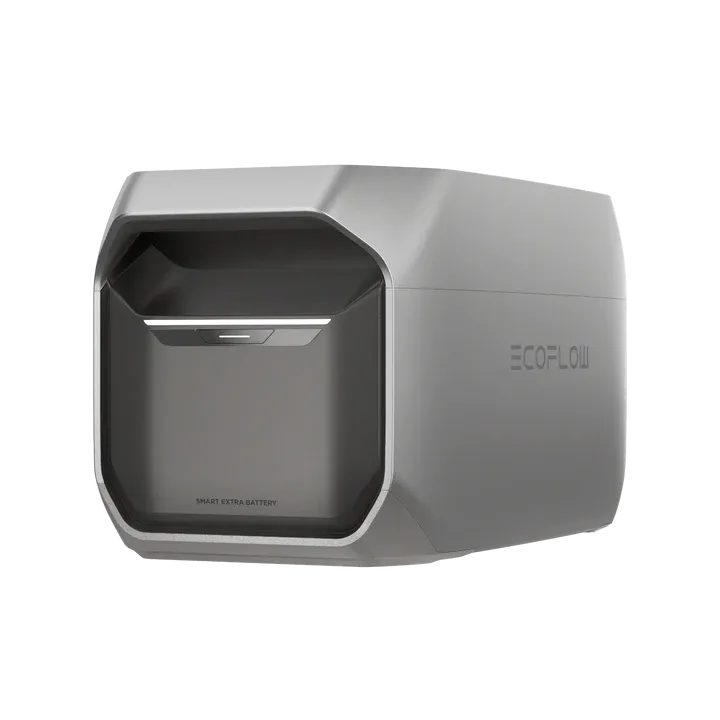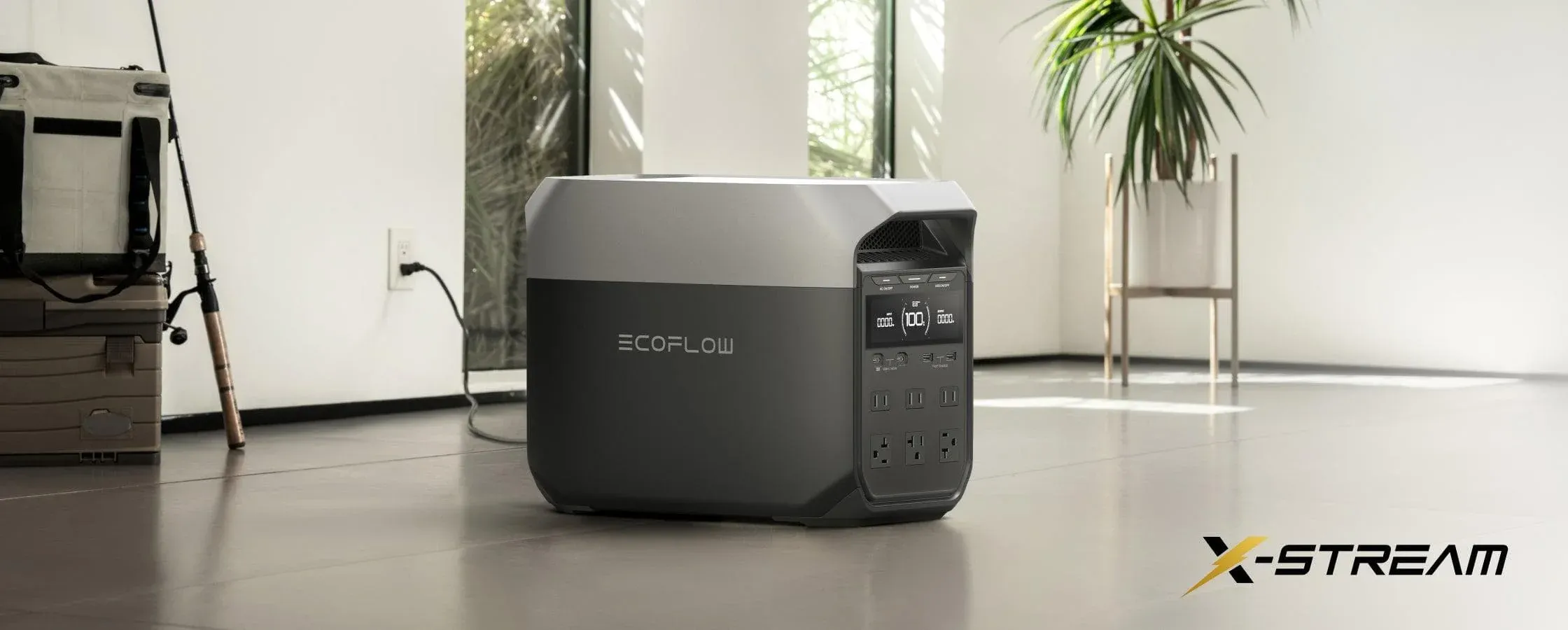A Guide to Managing Electricity During a Hurricane
- Why a Battery Backup for Home Power Outage Is Essential in Storm Season
- What a Good Battery Backup for Home Power Outage Should Power
- How to Size a Battery Backup for Home Power Outage
- How Fast Charging Helps Your Battery Backup for Home Power Outage
- EcoFlow DELTA 3: A Smart Battery Backup for Home Power Outage
- How to Extend the Life of Your Battery Backup for Home Power Outage
- Where to Place a Battery Backup for Home Power Outage
- Solar Charging and the Battery Backup for Home Power Outage
- Battery Backup for Home Power Outage vs. Gas Generators
- Final Thoughts: Choosing the Right Battery Backup for Home Power Outage
- Frequently Asked Questions (FAQ)
Find the best battery backup for home power outage before the storm hits.
When a hurricane comes, the lights go out fast. But your power plan doesn’t have to fail. With the right battery backup for a home power outage, you can protect your family, your food, and your peace of mind. This guide walks you through every step to stay safe, prepared, and powered.
Why a Battery Backup for Home Power Outage Is Essential in Storm Season
Power outages are not rare. Be ready before they happen.
Hurricanes often cause blackouts that last for hours—or even days. Without power, your home loses lights, internet, cooking, and medical support. That’s why more families are choosing a battery backup for home power outages as a long-term solution.
Unlike fuel-based systems, battery backups work silently, safely, and instantly. You don’t need to go outside or worry about refueling. Once the storm starts, they keep working without your help.
What a Good Battery Backup for Home Power Outage Should Power
Focus on the essentials: food, health, communication, and comfort.
During a hurricane, you don’t need to power everything. Focus on what keeps your home running:
- Refrigerator and freezer (keep food from spoiling)
- Medical devices (like CPAP or oxygen machines)
- Phones and Wi-Fi (stay connected with emergency alerts)
- Lights and fans (stay safe and cool)
A strong battery backup for a home power outage should power all these devices at once. Check the watt ratings on your appliances to match them with your battery’s output.


How to Size a Battery Backup for Home Power Outage
Bigger storms need a bigger capacity. Plan accordingly.
Not all homes use the same amount of energy. The size of your battery depends on how much power you want to cover. Here’s a quick guide:
| Daily Usage | Suggested Battery Size |
| Lights + Phones only | 500–1000Wh |
| Fridge + Wi-Fi + Lights | 1000–3000Wh |
| Full-day basic use | 3000–5000Wh+ |
Large homes or those in high-risk storm zones should choose a battery backup for home power outages that can expand beyond 5kWh. Modular systems are ideal for this.
How Fast Charging Helps Your Battery Backup for Home Power Outage
Time is limited. Your system must charge quickly.
You may only have a few hours to prepare before the storm hits. If your battery charges slowly, you risk facing a hurricane with only partial backup.
That’s where a fast-charging battery backup for a home power outage becomes critical. Newer systems can charge fully in under an hour, giving you more time for other emergency prep. This speed reduces stress and makes the backup more useful in real life.
EcoFlow DELTA 3: A Smart Battery Backup for Home Power Outage
Silent. Expandable. Ready in 56 minutes.
For homes needing a large, flexible backup system, the EcoFlow DELTA 3 offers a smart solution. It charges from 0–100% in just 56 minutes, offers 1024Wh base capacity, and expands up to 5kWh. You get 1800W output (2200W with boost), a <10ms UPS for instant switchover, and 4000-cycle battery life.
It also supports five charging options—wall, solar, car alternator, generator, and hybrid. That means even in a long outage, you have options.
More importantly, the DELTA 3 stays quiet at just 30dB and gives real-time updates via a smart app. For anyone serious about having a battery backup for a home power outage, it covers both daily needs and emergency demands—without the noise or fuel.
How to Extend the Life of Your Battery Backup for Home Power Outage
Don’t just store it. Learn how to care for it.
To get long use from your system:
- Charge it every 1–3 months, even when not in use
- Store in a dry place, away from direct sunlight
- Avoid overloading the output ports
- Use power-saving mode when possible during outages
A well-maintained battery backup for home power outages can last 8–10 years or longer. Think of it as a permanent part of your home system, not just a seasonal tool.
Where to Place a Battery Backup for Home Power Outage
Safe storage makes it easier to access when needed.
Place your battery system in a dry, clean area inside your home. Avoid garages or sheds that can flood or overheat. If the system is heavy or expandable, make sure the location allows easy wiring to your most-used appliances.
Some users wire their battery backup for home power outages directly into a sub-panel for smoother operation. Others use manual extension cords. Both work, but a planned setup saves time and stress when the storm arrives.
Solar Charging and the Battery Backup for Home Power Outage
Solar works—if the weather allows.
Many modern battery backups support solar charging. This is a great feature, but remember: hurricanes often bring clouds, rain, and debris. Relying only on solar isn’t wise during the storm itself.
However, after the storm passes, solar can help recharge your system when the grid is still down. That’s why choosing a battery backup for a home power outage with multiple charging inputs—AC, solar, generator—is smart.


Battery Backup for Home Power Outage vs. Gas Generators
Know the difference before the storm begins.
Gas generators are loud, require fuel, and cannot be used indoors. They work, but not without risks—especially with carbon monoxide.
A battery system, by contrast:
- Works silently
- Charges in advance
- Runs indoors
- Requires no fuel storage
- Starts instantly when power cuts
If you value safety, ease of use, and indoor operation, a battery backup for a home power outage is the safer long-term investment.
Final Thoughts: Choosing the Right Battery Backup for Home Power Outage
You don’t need power 24/7—but you need it when it matters most.
You can’t stop the storm. But you can decide how your home responds. A reliable battery backup for home power outages gives you that control. It powers your fridge. It powers your phone. And sometimes, it protects your life.
Choose one that matches your energy needs, charges fast, works quietly, and lasts for years. Then, test it before the next storm. You’ll feel the difference—not just in the lights, but in your peace of mind.
Frequently Asked Questions (FAQ)
Q1: Can a battery backup for a home power outage support 240V appliances like well pumps or electric stoves?
Most portable battery backups only support 120V. If your home uses 240V appliances, check if your system supports split-phase output or connects through a compatible transfer switch. For full home coverage, pairing with an inverter or smart panel may be required.
Q2: Does a battery backup for a home power outage need to be grounded?
Yes. For safety, your battery system should be properly grounded, especially when connected to home circuits. Some units include built-in grounding protection but always follow the user manual and local electrical codes.
Q3: How do I monitor power usage in real time during an outage?
Many advanced battery backups include Bluetooth or Wi-Fi apps that show real-time power data. You can monitor input/output watts, estimated runtime, and charging status directly from your phone—all helpful features of a modern UPS battery backup during long outages when energy management is critical.
Q4: Can I use a battery backup for home power outages in high humidity or coastal areas?
Yes, but choose a unit with a sealed Battery Management System (like IP65-rated) and store it indoors. The high salt content in the air can damage exposed circuits over time, so avoid outdoor use unless the system is rated for it.
Q5: How does ambient temperature affect battery performance during a home power outage?
Battery efficiency drops in extreme heat or cold. Ideal operating range is typically 20–77°F (-6–25°C). During a hurricane, keep the unit in a temperature-stable area to maintain output and prevent battery degradation.